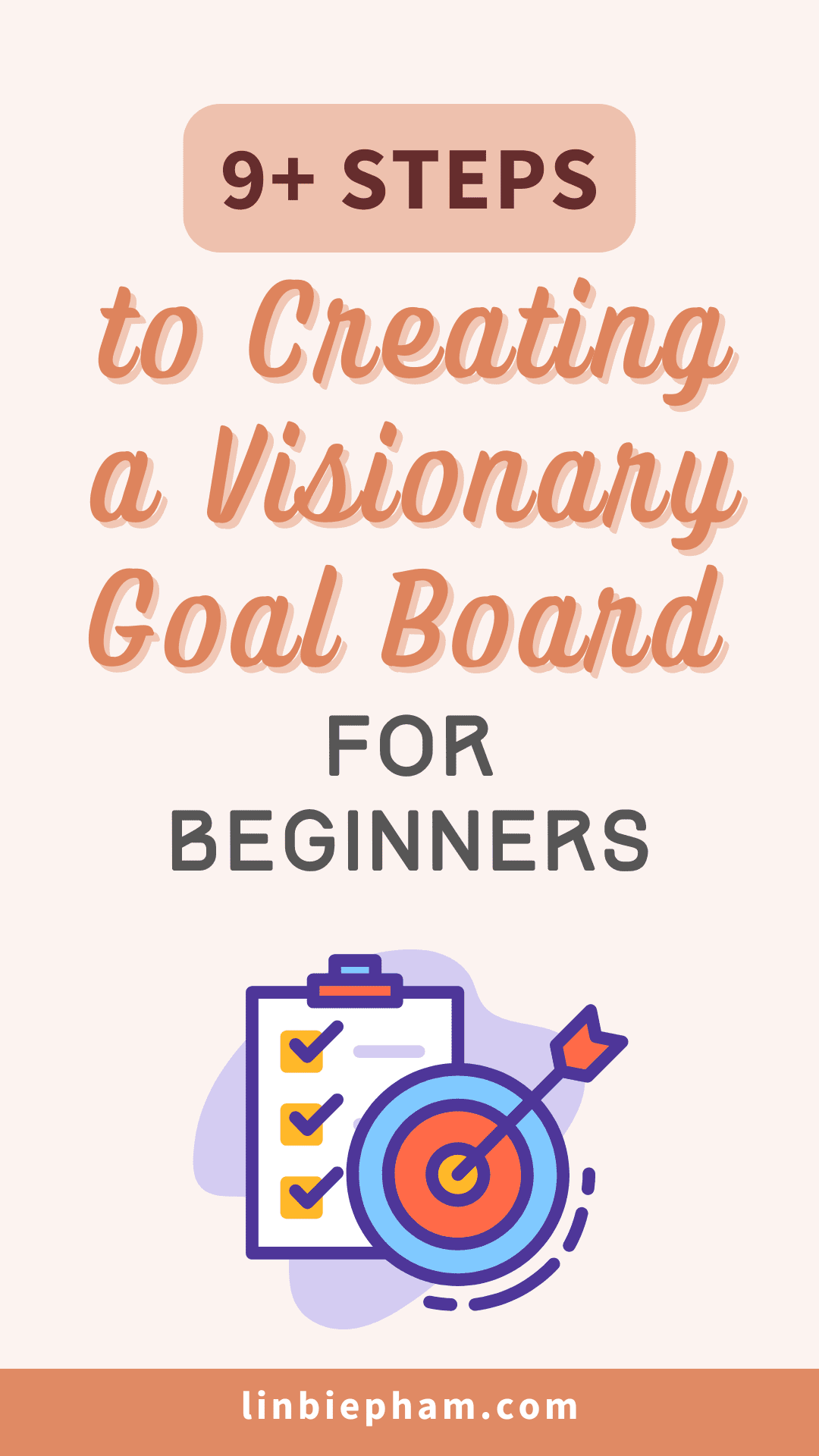Creating a visionary goal board can feel overwhelming, especially if you’re just starting out. You might be wondering where to begin or how to make it truly reflect your dreams and aspirations. Trust me, you’re not alone. Many people struggle with turning their goals into a visual roadmap.
But here’s the good news: I’m here to guide you through it. By the end of this post, you’ll have a clear, step-by-step plan to create a goal board that not only looks great but also keeps you motivated.
In this article, we’ll break down the process into simple, manageable steps. Let’s get started on making your dreams a reality with a visionary goal board!
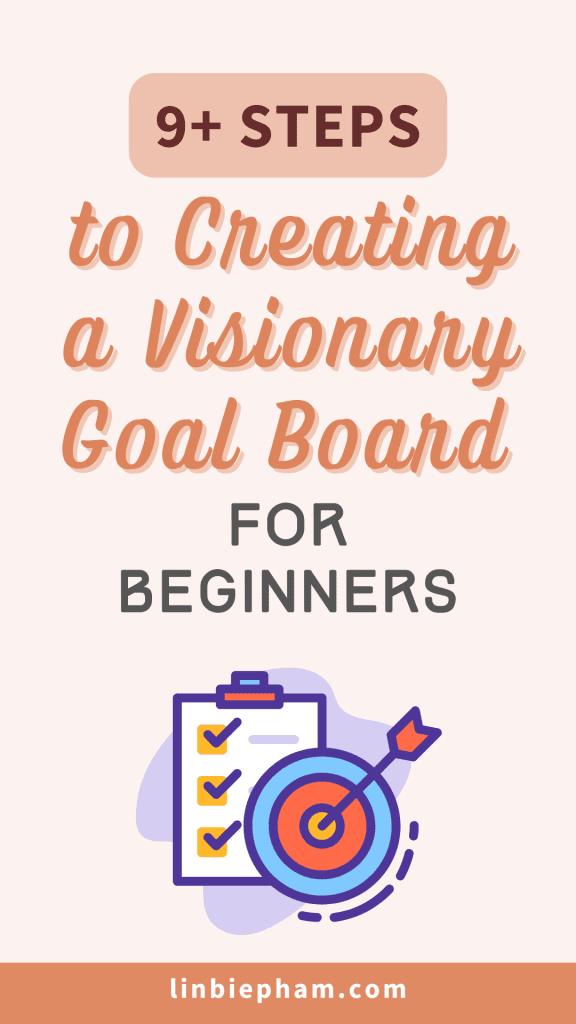
Why Create a Visionary Goal Board
Creating a visionary goal board is more than just a fun craft project; it’s a powerful tool for manifesting your dreams and staying focused on your objectives.
A goal board serves as a constant visual reminder of what you want to achieve, helping to keep your aspirations front and center in your daily life.
Studies have shown that visualizing your goals can significantly increase your chances of achieving them.
By laying out your dreams and ambitions in a tangible format, you can better track your progress and stay motivated.
In the following sections, we’ll explore the step-by-step process to create a goal board that will inspire and guide you on your journey to success.
Step-by-Step Guide to Creating a Visionary Goal Board for Beginners
Creating a visionary goal board can be an exciting and transformative experience, especially for beginners who are new to the concept.
A goal board is a powerful tool that helps you visualize your dreams and stay focused on your objectives.
By breaking down your aspirations into visual elements, you can create a constant reminder of what you are working towards.
This step-by-step guide will walk you through the process of creating a goal board, from gathering materials to selecting the right images and words that resonate with your ambitions.
Whether you’re aiming for personal growth, career advancement, or any other milestone, this guide will help you craft a goal board that keeps you motivated and on track.
In the following sections, we’ll delve into each step in detail, ensuring you have all the information you need to create a goal board that truly reflects your vision.
1. Understand Your Vision
Reflect Deeply
Begin by setting aside some quiet time to reflect on what truly matters to you. Consider all areas of your life—career, relationships, health, finances, and personal development. What do you dream of achieving? What would make you feel fulfilled and content? This step is about understanding your deepest desires and translating them into specific goals.
Journaling Exercise
Writing down your thoughts can be incredibly clarifying. Start by asking yourself questions like, “What do I want to achieve in the next year, five years, or even ten years?” Write freely without self-judgment. This exercise will help you bring your thoughts into focus and form the foundation of your goal board.

2. Gather Materials
Physical Goal Board
If you prefer a hands-on approach, gather materials such as a corkboard, poster board, or foam board. You’ll need markers, scissors, glue, and decorative elements like stickers, washi tape, and colorful paper. These supplies will help you create a board that is not only functional but also visually inspiring.

Digital Goal Board
If you’re more tech-savvy or want something easily editable, consider creating a digital goal board using tools like Canva, Pinterest, or specific vision board apps. Collect digital images, quotes, and icons that resonate with your goals. The advantage of a digital board is its flexibility—you can update it anytime without needing physical materials.
3. Create Goal Categories
Organize Your Goals
Begin by dividing your board into different sections for each area of your life. Common categories include Personal Growth, Career, Health, Relationships, and Financial Goals. This organizational step helps you balance your focus and ensures that you’re not neglecting any important aspect of your life.

Color-Coding
Assign different colors to each category to enhance visual clarity. For example, you might use green for financial goals, red for health, and blue for personal growth. Color-coding not only makes your board more attractive but also helps you quickly identify different types of goals.
4. Choose Inspiring Images and Words
Visual Selection
Go through magazines, online sources, or personal photos to find images that represent your goals. Choose visuals that evoke strong emotions and motivation. These images should resonate deeply with what you want to achieve, making them powerful reminders of your aspirations.
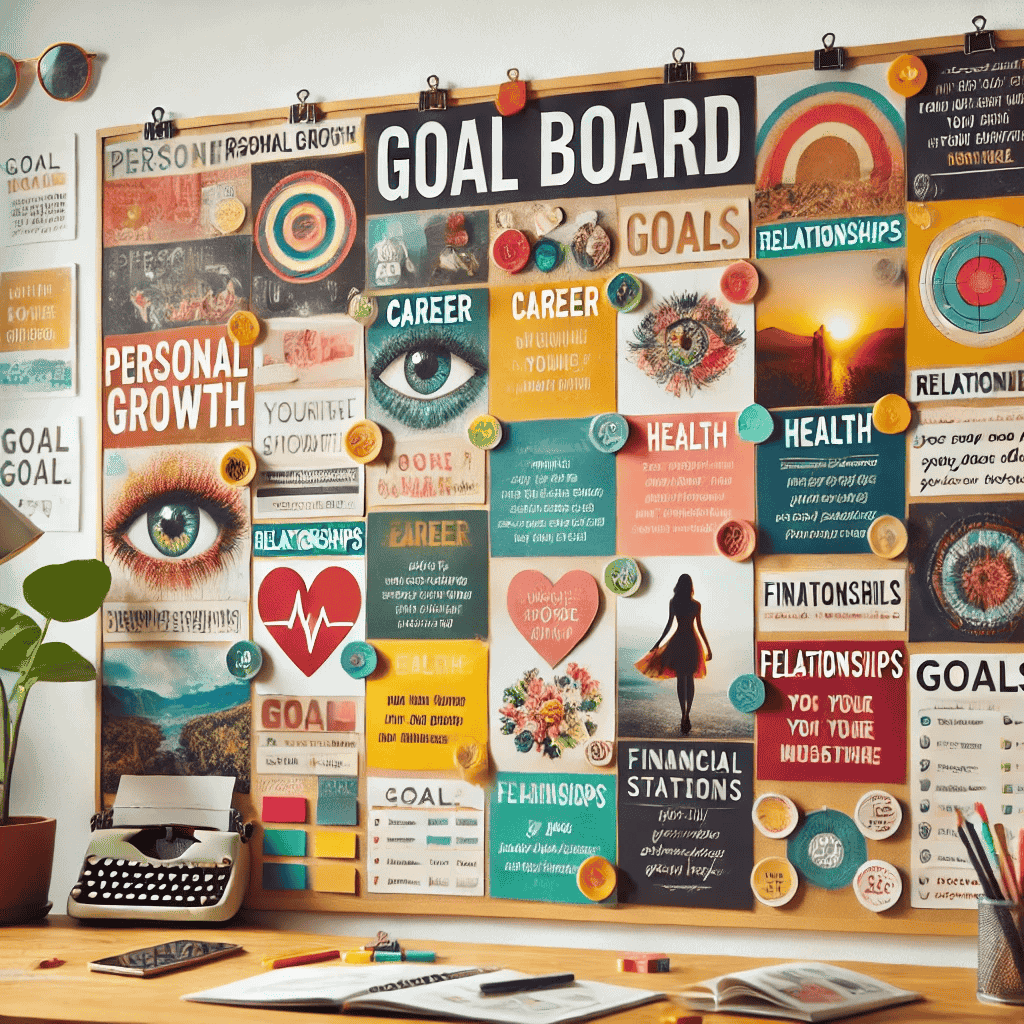
Powerful Language
Words are powerful tools in goal-setting. Use motivational quotes, affirmations, or even single words that encapsulate your goals. Ensure that the language is positive and empowering, reflecting the outcomes you desire. Phrases like “Success,” “Wellness,” or “Growth” can be simple yet impactful.
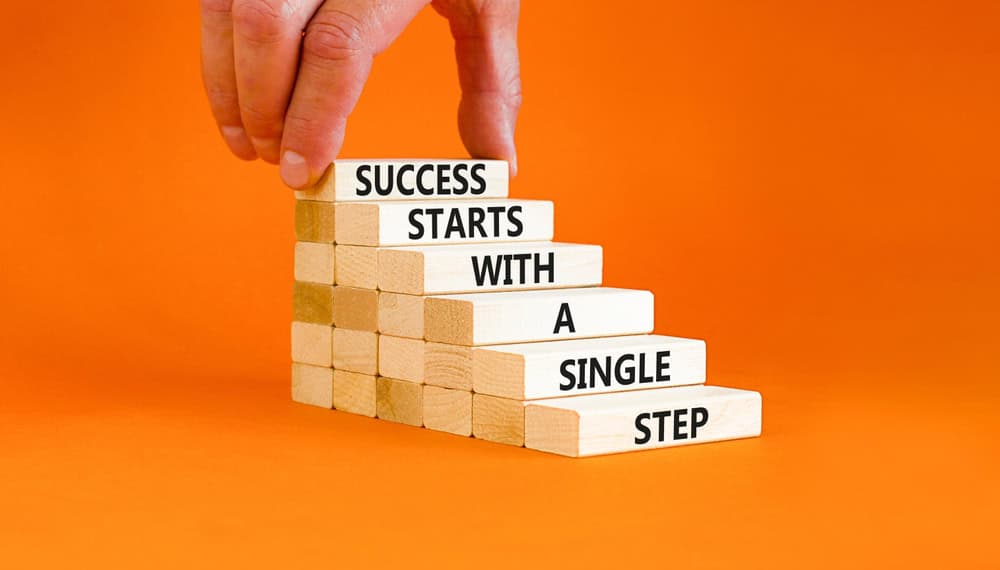
5. Arrange and Attach Your Elements
Mock Layout
Before you start attaching anything to your board, lay out your images and words to experiment with different arrangements. This mock setup allows you to see how everything fits together and ensures that the board is both aesthetically pleasing and functional.
Finalize Layout
Once you’re satisfied with the arrangement, begin gluing or pinning everything in place. Consider layering or overlapping images for a dynamic look. The goal is to create a board that not only serves as a tool for tracking your progress but also as a piece of art that inspires you every day.
6. Set Clear and Specific Goals
SMART Goals
Make sure each goal you set is Specific, Measurable, Achievable, Relevant, and Time-bound. For example, instead of setting a vague goal like “Get in shape,” specify it as “Exercise for 30 minutes, three times a week.” This clarity will help you stay focused and make it easier to track your progress.
Goal Statements
Next to each visual element, write a clear, concise statement that details what you want to achieve and by when. These statements should be actionable and motivating, serving as daily reminders of what you’re working toward.
7. Place Your Goal Board in a Visible Location
Strategic Placement
Choose a location where you will see your goal board every day—this could be your workspace, bedroom, or a prominent wall in your home. The goal is to keep your aspirations front and center in your mind.
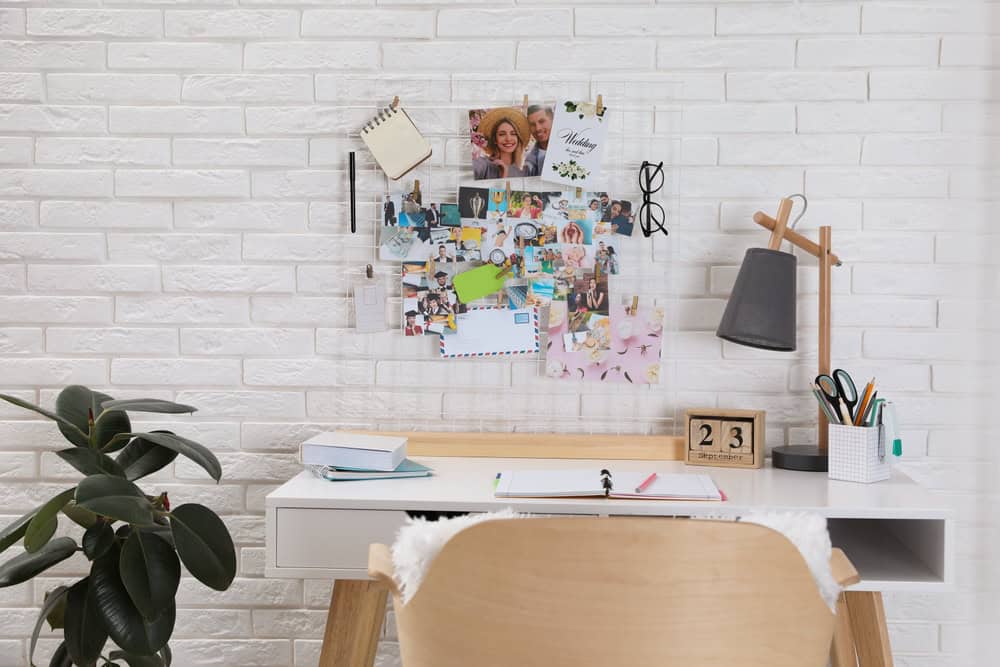
Daily Visualization
Make it a habit to spend a few minutes each day reviewing your board. During this time, visualize yourself achieving your goals, feeling the emotions associated with your success. This practice reinforces your commitment and keeps your motivation high.
8. Review and Update Regularly
Monthly Check-Ins
Schedule regular check-ins, perhaps monthly, to review your progress. Use this time to reflect on what’s working, what’s not, and what adjustments might be needed. This step is crucial for staying on track and adapting to any changes in your goals or circumstances.
Adjust Goals
As you achieve goals or as your priorities shift, update your board. Replace completed goals with new ones, and keep the board fresh and relevant to your evolving life. This practice ensures that your goal board remains a dynamic tool that grows with you.
9. Use Affirmations and Positive Language
Affirmation Integration
Write and place positive affirmations on your board that align with your goals. For example, “I am achieving my goals with ease” or “I am capable of greatness.” These affirmations should be positive, present-tense statements that reinforce your belief in your ability to succeed.
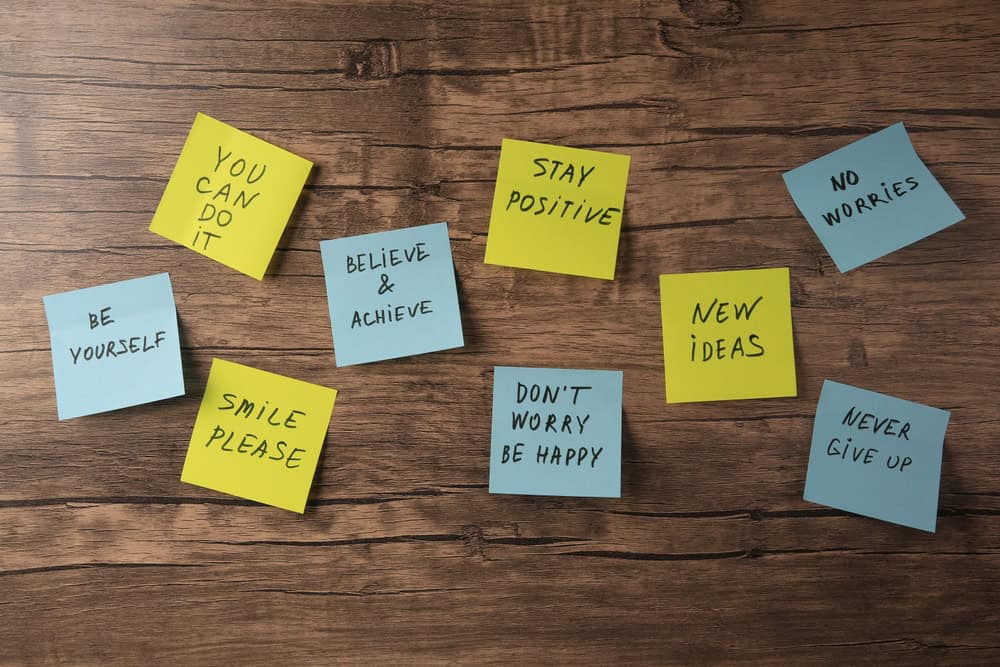
Daily Repetition
Incorporate these affirmations into your daily routine, perhaps by reading them aloud each morning. Repeating affirmations helps to internalize positive thoughts and boost your confidence, making it easier to stay committed to your goals.
10. Celebrate Your Wins
Reward System
Treat yourself when you reach significant milestones. This could be something simple like a favorite treat, a day off, or an activity you enjoy. Celebrating your achievements not only boosts morale but also motivates continued progress toward your larger goals.

Milestone Markers
Dedicate a section of your board to track and celebrate your achievements. Mark completed goals with a gold star, checkmark, or a congratulatory note. Celebrating your wins, no matter how small, builds momentum and reinforces positive behavior.

Creating a visionary goal board is a fun and powerful way to focus on your dreams.
First, understand your vision by writing down your thoughts and goals.
Next, gather materials, whether you choose a digital or physical board.
Then, start putting your board together with images, quotes, and anything that inspires you.
Finally, place your goal board somewhere you can see it every day to keep you motivated.
By following these simple steps, you can create a goal board that truly reflects your dreams and helps you stay on track.
If you found this guide helpful, please share it with your loved ones so they can create their own visionary goal boards too!
